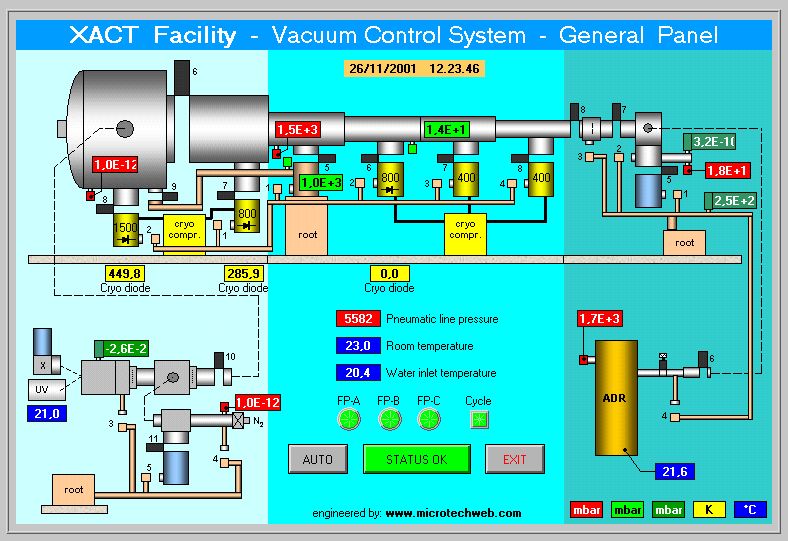
Osservatorio Astronomico di Palermo Giuseppe S. Vaiana
XACT facility - Technical Description
Vacuum Pumping System
The vacuum system is based on cryogenic pumps, magnetic levitation turbo molecular pumps, and on lubricant free ceramic bearings turbo molecular pumps.
The cryogenic pumps (Edwards Coolstar series), have a total nominal pumping speed of 3900 l/s; 2400 l/s are allocated to the pipe, distributed over 4 units, and 1500 l/s are allocated to the test section. The 5 units are driven by 2 compressors and are connected to the chambers through pneumatically operated isolation gate valves. The redundancy of the pumping system allows operation under failure of one of the cryopumps. Pre-vacuum is obtained by means of an oil-free rotative dry-pump (Edwards DP80). The vacuum obtained by such a system is very clean and with no carbon contamination, therefore particularly suitable for the development of contamination sensitive devices like micro-channel plate detectors. A vacuum in the mid 10-7 mbar scale is tipical, while it raises in the low 10-6 mbar scale when operating gas flow counters or gas discharge sources in the UV/Visible beam-line.
The magnetic levitation turbo molecular pump (SEIKO SEIKI MAGLEV STP 300) allocated to the X-ray source chamber is able to maintain a vacuum in the low 10-8 mbar scale. Its characteristics of cleanliness are comparable to those of the cryopumps. Its nominal pumping speed is 300 l/s.
In order to keep the UV beam-line in high vacuum when the gas windowless source is operated, a differential pumping section was mounted between the source (10^-1 mbar scale) and the monochromator section (10^-5 mbar scale). This feature allows to use a moderate pumping speed turbo molecular pump in the monochromator section (300 l/s).
The vacuum system including pumps, valves, temperature and pressure gauges is entirely computer controlled via a friendly graphical interface with a large number of built in safety controls to allow usage to guest researchers. The vacuum pumping system can be controlled from anyone of the computers of the LAN and/or via electromechanical switches on a control panel. The status of the facility is also available on the WEB for real time remote monitoring.